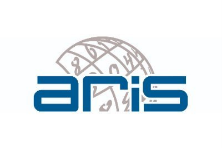Nanoscale organisation of NK cell receptor-ligand complexes
Slovene partner: UNG (Ario de Marco). Foreign partners: Vienna University of Technology (Mario Brameshuber); Charles University – Prague (Ondrej Vanek)
UNG group members: Lucia Cikatricisova, Klara Kropivšek
Duration: Nov 2023 - Oct 2026
Topic:
NK cell activity must be tightly controlled to be beneficial for the organism and avoid excessive immune reactions. The communications among cells is mediated by several biological components, among which protein receptors displayed on the cell membrane play a central role. We wish to understand how the organization and activity of such receptors is regulated and we shall use small protein ligands to label them and tune their interaction possibilities.
Specifically, we wish to determine how the oligomeric state of model receptors present on the surface of human natural killer (NK) cells changes upon specific ligand binding. There are indications that receptor assembly and receptor:ligand complex assembly within NK cells play a key role in the anti-tumor cytotoxic response, but the molecular basis of the synergy between activating NK cell receptors is not well understood. Single-molecule microscopy (SM) based on localization and signal intensity has improved greatly in recent years, allowing visualization of differences between individual molecules in living cells. While these techniques are applied extensively to study T cell immune recognition, only limited knowledge is so far available for NK cells. These lymphocytes possess unique ability to recognize and induce death of tumor and virus-infected cells through multiple activating and inhibitory cell surface receptors interacting with ligands present on the targets. To approach the problem in a comprehensive way, we combined the complementary expertise of the three research groups in structural biology of NK cell receptors, nanobody production and SM microscopy. Specifically, we will study the oligomeric status of the NKp30:B7-H6, NKR-P1:LLT1/Clrb and NKG2D:MICA complexes and their correlation with signal transduction, NK cell activation or inhibition, and NK cell cytotoxic response to tumor cells. The final goal will be acquiring the capacity to tune the intensity of such activity to maximize its effectiveness against tumor cells.
The specific contribution of the Slovenian partner will be the development of optimized reagents. Nanobodies are the smallest antibody fragments which preserve the binding features of the whole molecule and because of their small mass (14 kDa, 1/10 of conventional IgG) have become the preferred selective binders in super resolution microscopy. As a recombinant molecule, nanobodies enable controlled, 1:1 functionalization and can be inexpensively produced in bacteria as monomers of homo- and heteropolymers. These conditions make possible to have the fluorescent signal distant only few nm from the actual target, instead of the tens of nm obtained by means of conventional antibodies. Tuning the experimental conditions during their in vitro selection allows for the recovery of binders that preferentially recognize epitopes of interest. Our group possesses its own, highly-validated phage display library to perform unbiased nanobody selection for any target in just few days, using both soluble antigens and whole cells. We also designed, developed and optimized expression vectors for convenient nanobody tagging as well as expression platforms. For the successful accomplishment of this project, our group will select nanobodies against the target proteins and a particular effort will be devoted to the identification of nanobodies specific for different epitopes to generate reagents that either will inhibit the receptor-ligand interactions or will not interfere with such molecular recognition. Nanobodies will be provided with different fluorescent proteins and derivatization tags for parallel multiple labeling. This option simplifies contemporary multi-dimensional analysis of several targets. Furthermore, nanobodies will be produced as monomers or polymers for studying their effect on the receptor oligomerization process.
Project implementation:
Altogether, the project progresses according to the schedule proposed by our lead partner and the collaboration among the partners is effective. Frequent plenary meetings are useful to update all the team members, whereas single technical issues are solved by means of one-to-one mail exchanges. Also the work distribution proceeds smoothly, with material moving from one to the next lab, according to the specific requirements and activities.
Objective 1. Binder selection and production. We already recovered binders for two of the three targets and produced most of them with different tags, allowing our partners to setting their experimental conditions with such reagents.
Objective 2. Binder characterization and engineering. The characterization of the selected binders has progressed and confirmed their reliability. Optimization engineering has been used to introduce variants tailored for the needs of specific applications. The resulting reagents seem particularly suitable for advanced microscopy.
Objective 3. Production of application-optimized immunoreagents. This objective has been planned for the third project year, but we already started preparing ad hoc plasmids for the production of these immunoreagents.
Publications:
D’Ercole C, de Marco A (2023) Native agarose gels and contact blotting as means to optimize the protocols for the formation of antigen–ligand complexes. Bioengineering 10:1111 COBISS.SI-ID 165464323
D’Ercole C, De March M, Veggiani G, Oloketuyi S, Svigelj R, de Marco A (2023) Biological applications of synthetic binders isolated from a conceptually new Adhiron library. Biomolecules 13:1533 COBISS.SI-ID 168816899
Štrancar A, D’Ercole C, Nakić M, Cikatricisova L, De March M, de Marco A (2024) A practical guide for the quality evaluation of fluobodies/chromobodies. Biomolecules 14:587 COBISS.SI-ID 195579651
KALOUSKOVA, Barbora, SKOŘEPA, Ondřej, BLÁHA, Jan, CIKATRICISOVÁ, Lucia, DE MARCO, Ario, VANĚK, Ondřej, BRAMESHUBER, Mario. Understanding the nanoscale organization of natural killer cell receptor NKp30 at the singlemolecule level. V: SMLMS 2024, 13th Single-Molecule Localization Microscopy Symposium : 28th-30th of August 2024, Lisboa & Oeiras : abstract book. [Portugalska: s. n., 2024. Str. 67 COBISS.SI-ID 230070787.
de Marco A (2025) Recent advances in recombinant production of soluble proteins in E. coli. Microb Cell Factories 24:21 COBISS.SI-ID 222590211

